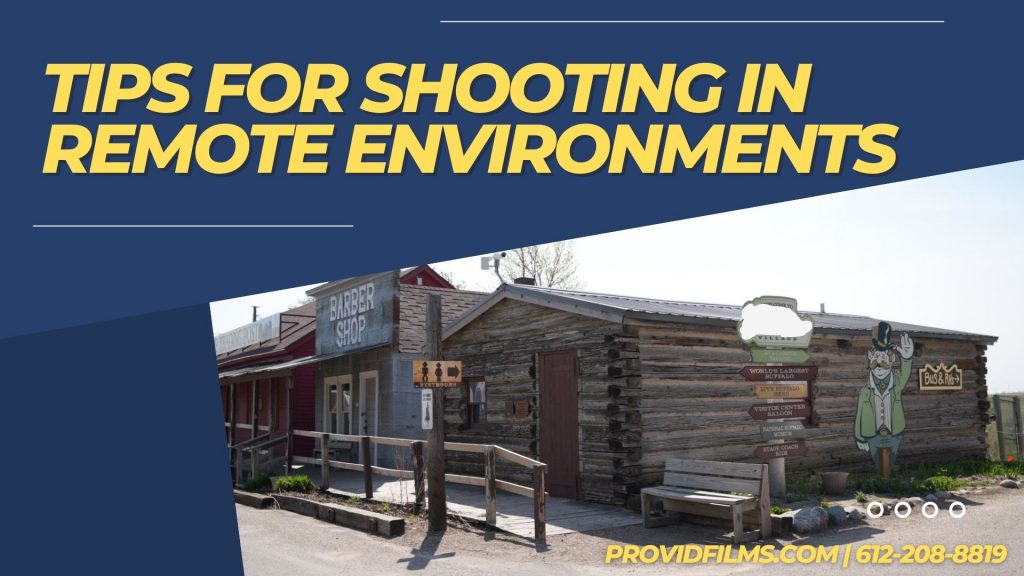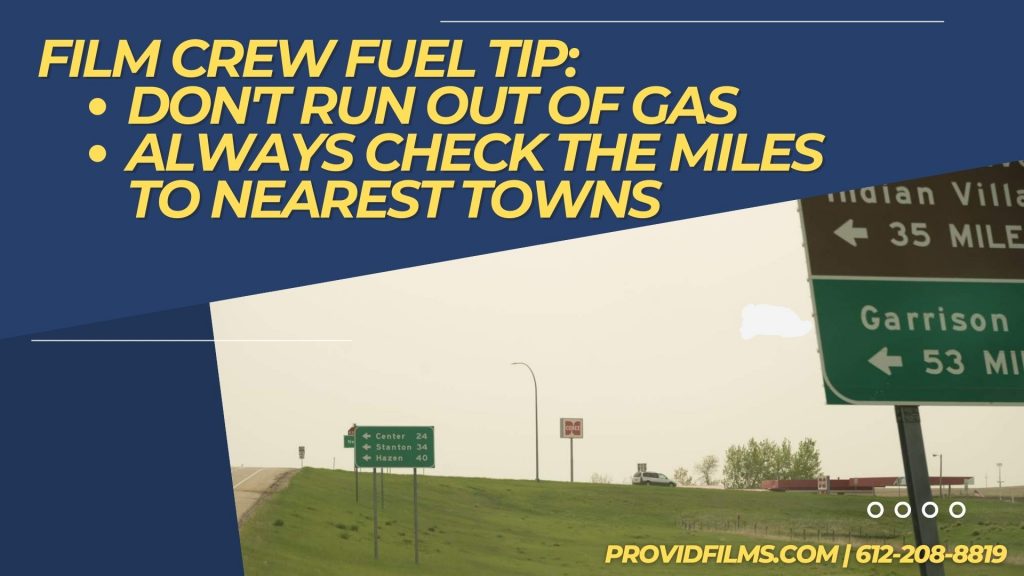Tips for Shooting in Remote Environments
This summer we had the opportunity to film for a week “off grid” all day.
This incredible journey comes with its unique set of challenges working in a (potentially) remote wilderness settings with limited access to power.
If any of you have experience shooting in similar remote environments or are planning to film a project in a further off-grid remote location, you might greatly appreciate the advice and insights on how to make the most out of this adventure.

Here are a few specific aspects initially we were curious about:
1. Power Management: Given the scarcity of power options, how can we efficiently utilize our power needed to keep equipment charged and operational throughout the trip?
2. Equipment Selection: Are there specific camera, audio, or lighting equipment recommendations that have proven to be reliable and resilient in such remote environments?
3. Protection and Care: What measures can we take to protect the camera equipment from the elements, such as dust, humidity, and potential rain, while maintaining accessibility for quick shots?
4. Data Management: With limited connectivity, how do you manage data storage and backups effectively, ensuring that valuable footage is not lost?
5. Lighting Challenges: What creative solutions can be employed to overcome lighting challenges in the wilderness, especially during low-light situations or night shots?
6. Storytelling: What insights did we get on capturing the essence of the wilderness and client’s work while focusing on storytelling and meaningful shots?

Main topics to consider shooting in remote environments.
Topic 1: Power Management without wall power
Shooting “off grid” for a week presents an exciting challenge in power management. To efficiently utilize the limited power available, consider these strategies:
- Prioritize essential equipment for charging, such as cameras, drones, and laptops.
- Use power-efficient settings on your devices to extend battery life.
- Plan shooting schedules to coincide with peak sunlight hours for solar charging.
- Carry spare batteries and large lithium battery packs to ensure uninterrupted operation.
- Invest in energy-efficient LED lighting for extended usage without draining power.
Topic 2: Equipment Selection for off-grid filming
Selecting the right equipment is crucial for remote filming success. Consider these equipment recommendations:
- Opt for weather-sealed cameras and lenses to protect against environmental conditions.
- Choose lightweight, compact camera rigs for ease of transportation and maneuverability.
- Invest in a robust tripod to stabilize shots, even in uneven terrain.
- Use shotgun microphones with windshields to capture clear audio amidst outdoor noise.
- Consider using action cameras or drones for capturing unique perspectives in challenging environments.
Topic 3: Protection and Care from weather
Protecting your camera equipment from the elements is essential for long-lasting performance. Here’s how to strike a balance between protection and accessibility:
- Use weather-resistant camera bags or cases to shield equipment from dust and humidity.
- Keep silica gel packets in your camera bag to absorb moisture and prevent condensation.
- Utilize lens hoods and filters to prevent dirt and debris from directly contacting the lens.
- Keep a cleaning kit handy for quick dust removal and lens cleaning.
- Use lens and camera covers when not shooting to shield equipment from sudden weather changes.
Topic 4: Data Management for backcountry filmmaking
Managing data storage and backups without consistent connectivity requires careful planning. Here’s how to safeguard your footage:
- Carry multiple high-capacity memory cards to avoid running out of storage.
- Use portable hard drives or SSDs for immediate data backup after shooting sessions.
- Organize your footage by labeling folders and files for easy retrieval later.
- Utilize cloud storage solutions when connectivity is available to offload backups.
- Prioritize data security by encrypting backup drives and using password protection.
Topic 5: Lighting Challenges for filming in the country
Overcoming lighting challenges in wilderness settings involves creativity and adaptability:
- Embrace natural light during the golden hours for soft, warm tones.
- Use diffusers or reflectors to control harsh sunlight and create even lighting.
- Experiment with portable LED lights or small strobes for controlled lighting setups.
- Capture the ambiance of low-light situations with wider apertures and slower shutter speeds.
- Emphasize the beauty of the night sky by using long exposure techniques for night shots.
Topic 6: Storytelling Tips to Shooting in Remote Environments
Capturing the essence of the wilderness and your client’s work through storytelling requires a strategic approach:
- Research your client’s mission, goals, and projects to align your shots with their narrative.
- Focus on capturing candid moments and genuine interactions to convey authenticity.
- Utilize wide shots to showcase the environment’s grandeur and close-ups for impactful details.
- Incorporate interviews with subjects to weave personal stories into your visual narrative.
- Prioritize shots that highlight the synergy between the wilderness and your client’s initiatives.

BONUS Film Crew Fuel Tip: Don’t run out of fuel
If you’re filming all day, and you’re driving 35 or 53 miles each way between scenes, fill up before or after each day of filming.
The second to last thing you want to happen is for a crew vehicle to run out of gas, causing a delay during scene changes.
The last thing you want to happen is for a crew vehicle to run out of gas on a busy road, miles away from any cell signal at all and miles away from a gas station. Do NOT let that happen.
- Gas Station Locations: Before heading out to a shoot, identify gas stations along your route and at your destination. This ensures you have options if you need to refuel.
- Monitor Fuel Levels: Keep a close eye on the fuel gauge throughout the day, especially during long shoots or when traveling between locations. We encourage crew to never let their tanks get below half tank when doing lots of miles, or even better to fill up every day if there’s any question or possibility of fuel issues.
- Plan Ahead: Estimate the amount of fuel needed for each day’s shoot based on distance, travel time, and equipment usage. Always have a buffer and plan for extra stops if necessary.
- Top Off the Tank: Whenever you have a break or are near a gas station, take the opportunity to top off the tank. Even if the tank isn’t empty, filling up can help prevent future emergencies.
- Use Fuel Apps: Utilize mobile apps that show nearby gas stations and real-time fuel prices. This helps you locate the nearest station and find the best deals.
- Keep Spare Fuel: If you’re filming in remote areas, consider carrying spare fuel in approved containers. Ensure they’re safely stored and comply with transportation regulations.
- Communication: Encourage open communication within the crew regarding the fuel situation. If anyone notices the fuel level dropping lower than expected, they should inform the driver.
Fuel for generators is also something to consider if using gas generators. Do you have gas cans safely secured and ready to go?

BONUS Film Crew Tip: Don’t get lost unless you are on an enchanted highway
Navigating between locations efficiently is crucial for a film crew to maximize productivity and stay on schedule. Here are some tips to ensure your film crew doesn’t get lost:
- Plan Ahead: Familiarize yourself with the shooting locations well in advance. Study maps, GPS coordinates, and local landmarks to get a clear understanding of the routes.
- Use Navigation Apps: Utilize navigation apps like Google Maps or Waze to provide real-time directions, traffic updates, and estimated travel times. Make sure everyone on the crew has access to these apps on their devices.
- Offline Maps: Download offline maps of the areas you’ll be filming in, especially if you anticipate poor or no cell reception. Offline maps can still provide basic navigation without an active internet connection.
- Assign a Navigator: Designate someone on the crew as the navigator. This person should be responsible for inputting directions and providing updates to the driver.
- Communicate: Establish clear communication channels within the crew. Use walkie-talkies, group messaging apps, or two-way radios to stay connected and update each other on any changes or delays.
- Caravan Approach: If you have multiple vehicles in the crew, consider a caravan approach. The lead vehicle can have the navigator and follow a predetermined route, while the other vehicles follow behind.
- GPS Devices: Consider using dedicated GPS devices for navigation. These devices are designed for accuracy and reliability in various conditions.
- Physical Maps: Have physical maps of the area as a backup. In case of technology failures or loss of GPS signals, you can rely on traditional maps for reference.
- Check Traffic Conditions: Before you hit the road, check for any potential road closures, detours, or traffic congestion that could affect your travel plans.
- Landmark Identification: Identify key landmarks or distinctive features near your locations. This will help you identify your surroundings and verify that you’re on the right track.
- Local Knowledge: Reach out to locals or location scouts who are familiar with the area. They can provide insights into shortcuts, alternate routes, and local traffic patterns.
- Pre-Travel Meeting: Before departing for each location, conduct a brief pre-travel meeting to review the route, discuss any potential challenges, and ensure everyone is on the same page.
- Stay Calm: If you do find yourselves off-course or temporarily lost, stay calm and composed. Pull over safely, check your maps or navigation apps, and reorient yourselves.
- Emergency Contacts: Keep a list of emergency contacts for each location, including local authorities and your production coordinator. This ensures you have assistance if needed.
By implementing these tips, your film crew can navigate between locations confidently and efficiently, minimizing the risk of getting lost and ensuring a smooth filming experience.

I hope these insights help you navigate your “off grid” filming adventure successfully. Embrace the challenges and opportunities that come with filming in remote environments, and remember to stay adaptable and creative throughout the process.
Given our gear and crew, if you have a project you need to film off-grid in the USA, reach out to connect. We’d love to chat more.
